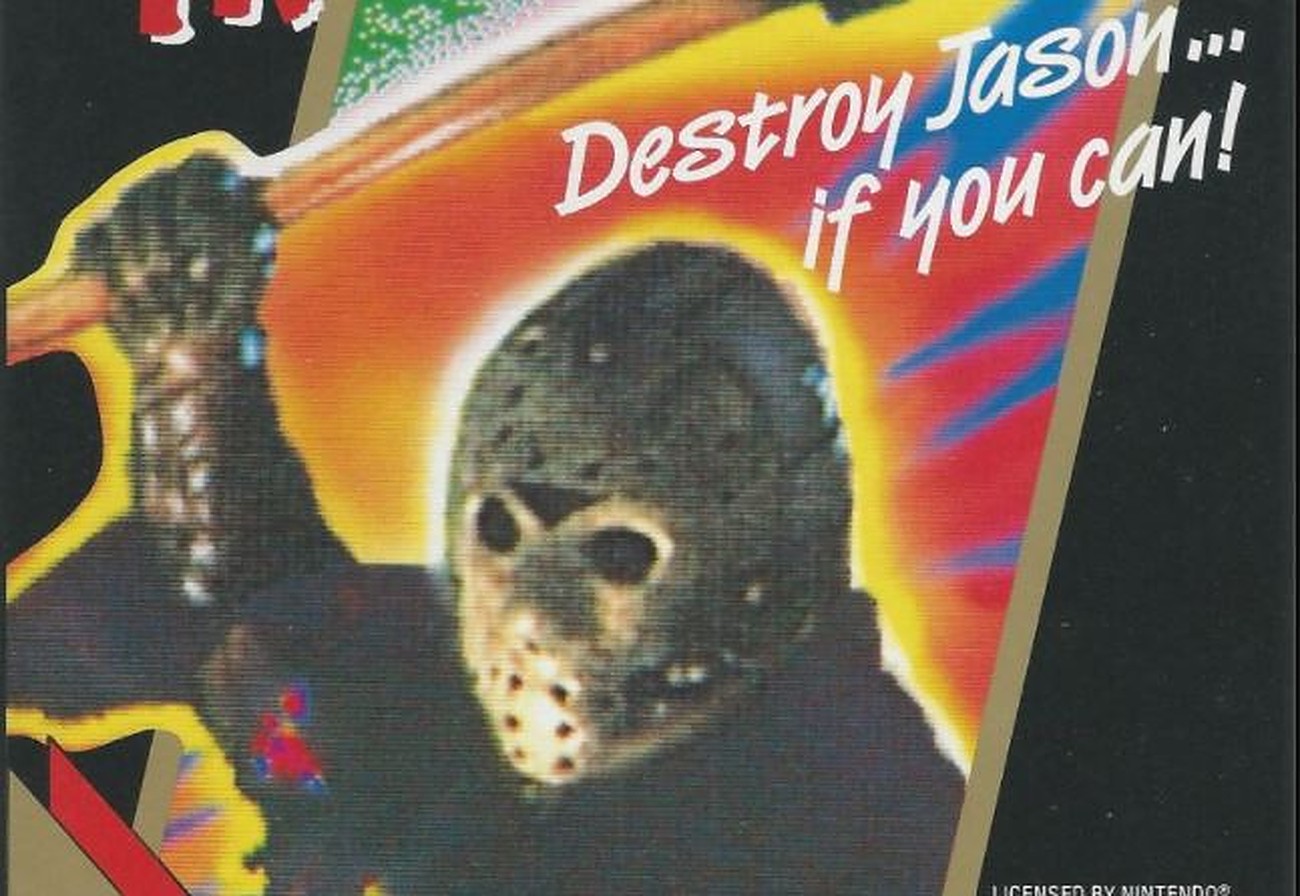Since it was released for the NES in 1989, Friday the 13th has found itself on many “worst” lists. GamePro once called it one of the ten worst games based on a film, EGM named it the eighth-worst console game of all-time in 1997, and even Nintendo Power (a publication that’s famous for rarely saying a bad word about any game on a Nintendo console) included Friday the 13th on their list of the worst games ever made. More recently, I included Friday the 13th on our list of the 15 worst NES games ever made.
The game’s sometimes overwhelmingly negative reputation made it that much more surprising to see so many people rush to our comments section to defend Friday the 13th and say that it doesn’t belong anywhere near the conversation about the worst NES games ever. Some called it underrated, some called it ahead of its time, and some suggested that it might actually be kind of…good?
As a lifelong fan of the Friday the 13th franchise and someone who grew up with the Friday the 13th NES game, I couldn’t believe that this infamous part of the series’ legacy was getting such love. Was I just misremembering this game? Have the years somehow improved this much-maligned title? Is there a chance that there’s been a worthwhile retro Friday the 13th game waiting for me this whole time and that I’ve simply been dismissing it based on childhood memories and its reputation?
Utterly intrigued by that possibility, I decided to boot up Friday the 13th again for the first time in a long time and take another look at it. What I found was a game that’s pretty far from good but is indeed far too intriguing to not at least be worthy of some kind of reappraisal.
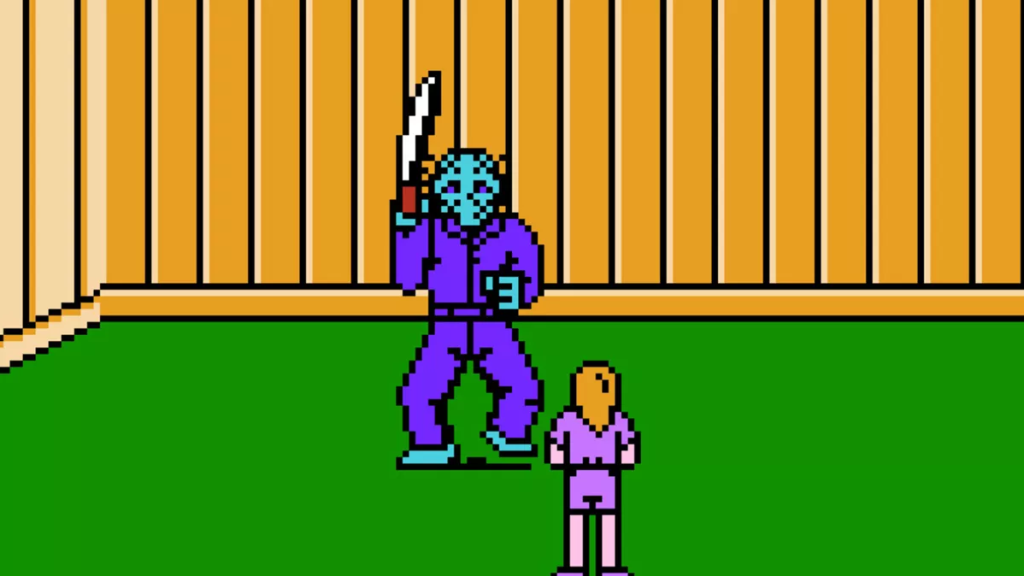
Let’s start with the basics. Friday the 13th is a 1989 NES game published by LJN (the notorious company at least partially responsible for some of the worst NES games ever made) but actually developed by Atlus: the studio that would go on to develop the Persona series and many other noteworthy games. Atlus also developed an adaptation of The Karate Kid for NES, which was actually the first licensed video game that LJN published and a kind of harbinger of the titles that would eventually define that company’s legacy.
The game itself sees you swap between six camp counselors as they do all of the things that suck about being in a Friday the 13th film (running from Jason, trying to save the campers, and dying) and none of the things that seem to keep people coming back to Camp Crystal Lake (sex, drugs, and watching Crispin Glover dance). Each counselor has their own unique stats and inventories, and if one of them dies, they’re gone forever.
You’ve probably already guessed that your main goal is to defeat Jason, but the bulk of the game is actually spent wandering around the camp, fighting various minor enemies (wolves, zombies, crows, and bats), and trying to collect the supplies and weapons that you’re absolutely going to need if you want to put Jason down long enough to give someone the time they need to write a new screenplay that helps justify why the horniest youths in America are willing to return to this epicenter of violence and horror: New Jersey.
I know that’s not a lot of information to go off of, but in order to accurately recreate the experience of playing Friday the 13th, you first need to be deprived of as much basic information as possible.
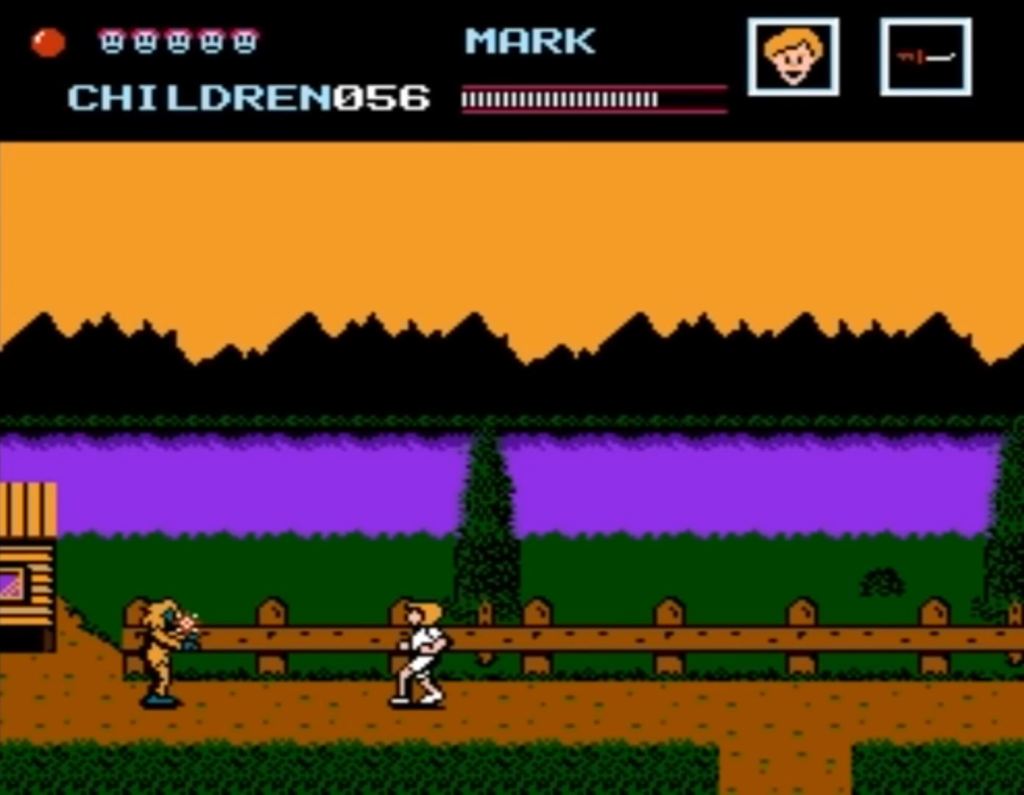
See, some fans like to call Friday the 13th a “hard” game, but it’s far more accurate to describe it as “confusing.” The game’s instruction manual presents itself as a detailed description of the experience (it even tells you to press Start to start the game, in case you didn’t know), but all but the most in-depth modern guides will leave you woefully unprepared for even the game’s most basic progression elements.
It starts with navigation. There’s a very good chance that most people who played this game at a young age will vividly remember the first time they tried walking right only to look at their map and discover that they’ve actually been moving to the left the entire time. Part of the problem here is that the vast majority of the map consists of loops that are inherently difficult to navigate, but so far as I can tell, there’s no actual explanation for why the game works that way besides the most likely possibility that it’s simply broken.
I can get over the fact that the caves and woods areas in this game are almost impossible to navigate without a guide as they’re clearly designed to be confusing, but I have a much harder time dealing with the elements of this game that are seemingly unintentionally confusing. For instance, an early instructional scene says you need a torch to light fireplaces, which is strictly not true. For that matter, lighting fireplaces isn’t even as important this strangely prominent hint may lead you to believe it is.
Of course, it’s hard to talk about unintentionally confusing Friday the 13th mechanics without getting around to the star of the show: Jason Voorhees, aka the apparent “Maven of Mayhem” and “the Sultan of Slash.”
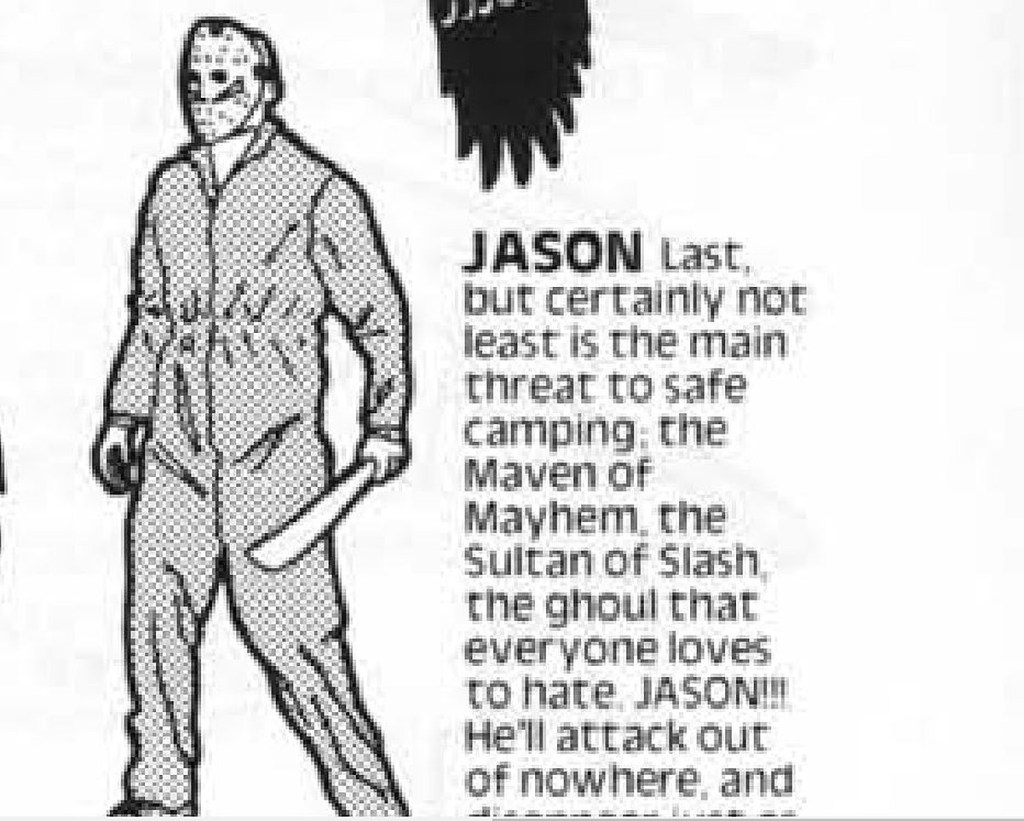
You technically have to defeat Jason three times across the course of three in-game days to beat Friday the 13th. Fortunately, you do have the option of either confronting Jason on the road/in the lake or in one of the cabins he’s currently stalking. The former sees you battle him in side-scrolling confrontations that should be familiar to most NES gamers, while the latter actually utilizes a Punch-Out!-style combat system that requires you to dodge Jason’s attacks and get a few hits in.
While Jason isn’t nearly as tough as the NES version of Mike Tyson, his chaotic movement patterns and the…questionable quality of the game’s combat controls are enough to ensure that most gamers will die horribly during their early attempts at one of these truly bizarre fight sequences. At least they accurately recreate the futility of getting in a boxing match with Jason, as we all learned from Friday the 13th Part VIII: Jason Takes Manhattan.
Your confrontations against Jason may seem random, but that’s not technically the case. Jason actually follows a specific pathing pattern around the Camp Crystal Lake map, and the game notifies you whenever he’s entered a cabin. Actually, it turns out there are very few “random” events in Friday the 13th. While the drop rate of items like keys and vitamins is ultimately random, it’s possible to acquire weapons like the ax, torch, and pitchfork through a series of specific steps. It’s just that the confusing nature of those steps often makes it so that you’re rarely sure what you did to acquire these items and how to do it again.
That turns out to be a big problem, as you practically need the best weapons in the game to stand a chance of beating Jason. You also preferably need to keep Mark and Crissy alive, as they are by far the most capable counselors in the game. While it’s kind of funny that the majority of the roster is little more than machete fodder (which weirdly honors the spirit of the films), it’s incredibly annoying to not feel incentivized to use the game’s character/inventory swapping mechanics simply because George and Paul are practically destined to die.
While we’re on the subject of slasher victims, we’ve also got to talk about the campers. As it turns out, you don’t actually need to save all the campers to win this game. You just need to make sure some of them are alive at the end. That means it’s possible to see Friday the 13th’s incredibly disappointing end screen while nearly a dozen digital children are lying dead in a nearby area. This game is often remembered for the blunt brutality of its “You and your friends are dead” game over screen, but it’s the way this game treats children that proves these developers were not playing around.
Then again, Jason’s not even your biggest enemy in this game. No, I’m not talking about the zombies, wolves, and bats, and I’m not even talking about the bizarre optional boss battle against Mrs. Voorhees’ floating head. As it turns out, your biggest enemy in this game is time itself.
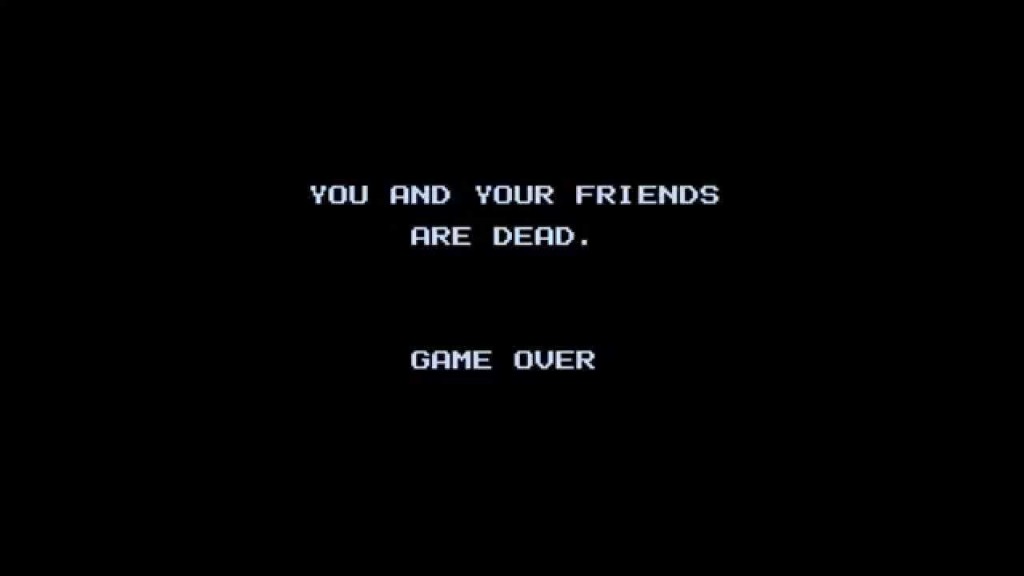
There’s a series of soft and hard time limits in Friday the 13th that practically determine everything you do. Want to acquire the best weapons? You need to go for them in a pretty specific way to help ensure you have enough time to put them to use. Want to save all the children? You need to know how the amount of time you take to get to them will determine how many kids are alive by the time you reach the cabin (which is another element of the game that the developers don’t clearly explain).
Time can even help determine how hard the game is and whether or not you get the right items. For instance, Jason is significantly more difficult to defeat in cabins on days two and three when he starts to utilize new attack patterns. You can make things easier on yourself by acquiring the sweater and pitchfork, but you need to know that you acquire the former by defeating Jason’s mom on day two and later by defeating her on day three.
Even if you somehow figure all of that out through in-game notes, trial-and-error, or out-of-game guides, you still have to navigate the game’s confusing controls and layout quickly enough to ensure that you can actually accomplish all these things in time. Whether you realize it or not, Friday the 13th constantly has you on the clock.
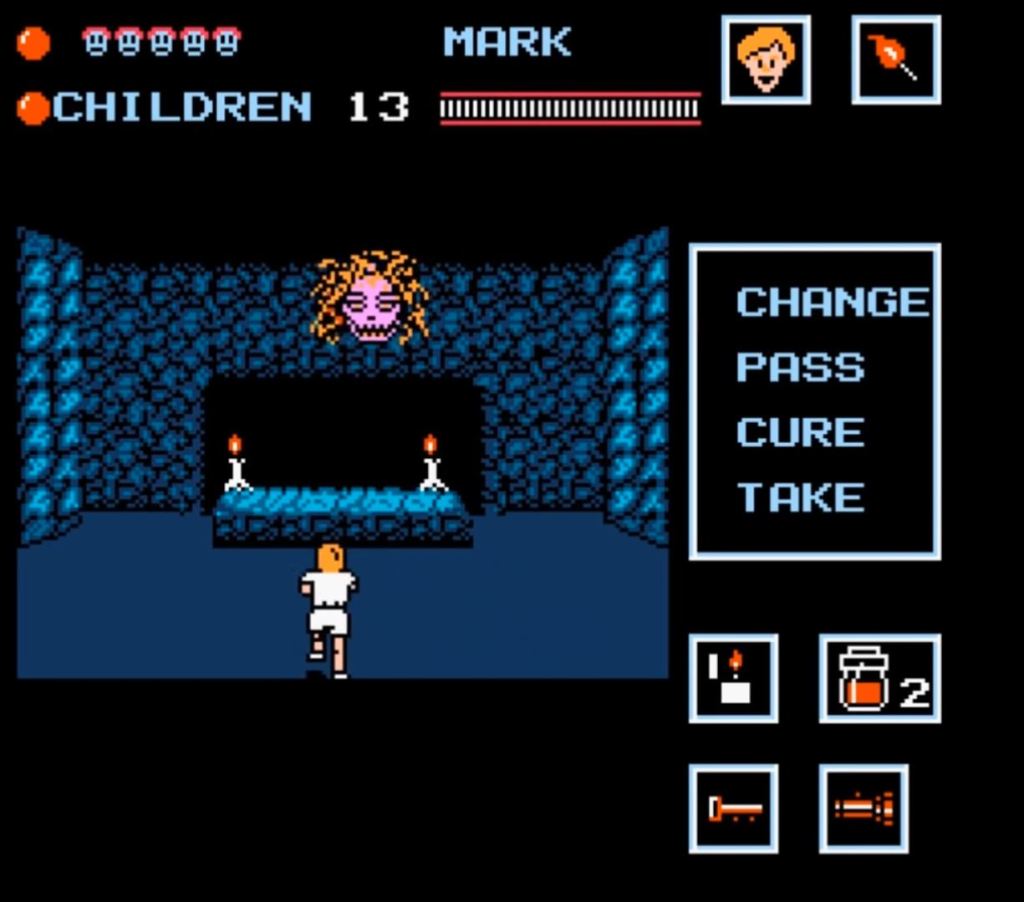
That’s the biggest problem with Friday the 13th. For all this talk about its open-ended design, unique multi-character mechanics, RPG systems, and free-roaming map, the game is ultimately a surprisingly linear experience. Unless you are a pro-level Friday the 13th player (which is probably not something you want to aspire to be), you kind of have to play this game in a very specific way in order to maximize your chances of beating it. The game just hides the best path forward by making everything so confusing that the only way to figure it all out is to keep trying and failing or just turn to a guide.
Some have compared Friday the 13th to Dark Souls in that respect, but the key difference is that Dark Souls is actually fun to play along the way. Fun in gaming is obviously a subjective topic, but the way that so much of Friday the 13th’s gameplay is devoted to just “figuring it out” recalls the confusing, often unenjoyable design of two of its fellow bad NES games: Super Pitfall and Deadly Towers.
When you get right down to it, Friday the 13th is still a pretty bad video game, especially when you look at it through the lens of modern gaming. Yet, it’s when you view the game from that same angle that you see why it’s so hard not to be at least a little in love with this title.
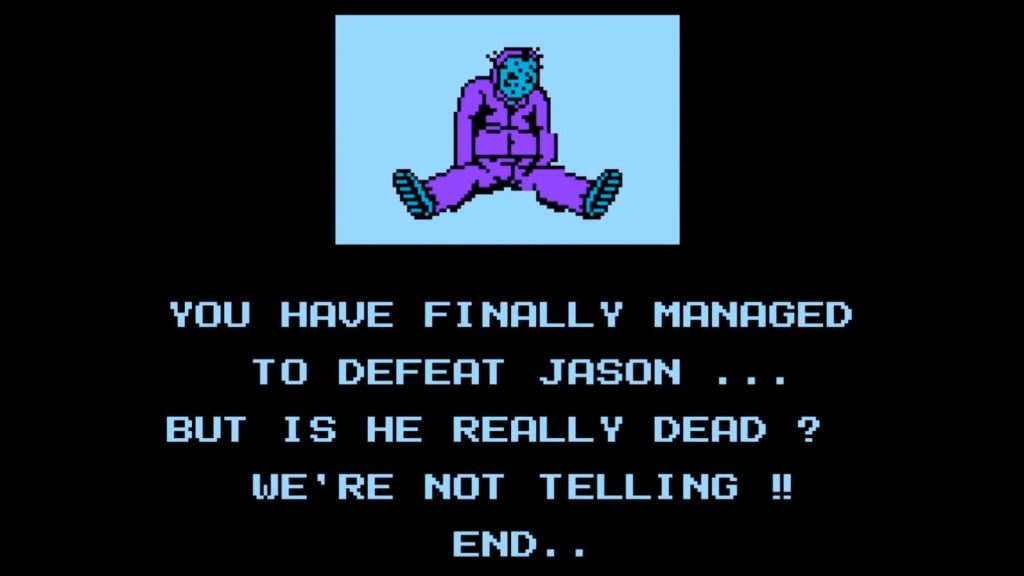
First off, let’s not lose ourselves in the discussion of whether or not this game is “accurate” to the movies. Do the counselors in Friday the 13th fight zombies and wild animals? No, but in the grand history of shoehorned video game enemies, this game’s collection of hostile obstacles is honestly relatively fitting.
I’ll also hear no ill words about Jason’s purple and blue outfit. It makes little to no sense for him to look like that, but the results are so damn charming that it’s really no wonder why his in-game design has developed a cult following that has honestly outlived the game itself. Even the game’s soundtrack is ultimately worth defending. It may be repetitive and occasionally grating, but it’s fairly strong in small doses and honestly does a pretty good job of selling the horror atmosphere.
Actually, Friday the 13th’s greatest attribute all these years later is that it is a horror game. At a time when horror games on the NES were little more than nonexistent, Friday the 13th offered an often creepy (especially for young gamers) horror experience that attempted to recreate the feeling of having to survive a slasher scenario. Would it have been easier (maybe even better) to make a game where you played as Jason or just navigated some side-scrolling action levels as one of the counselors? Maybe, but given the previous failures of games based on Texas Chainsaw Massacre and Nightmare on Elm Street that tried similar things, you pretty much have to give Atlus credit for doing something different.
“Different” might actually be the keyword here. I’m not ready to give Friday the 13th full credit for being ahead of its time (even if elements of the game like its day/night cycle and survival features kind of were), but it was distinct and interesting. At a time when the Friday the 13th film franchise was struggling to battle creative complacency while remaining true to the spirit of the series, the Friday the 13th NES game managed to do something different while staying relatively true to the movies in the ways that mattered most.
Is Friday the 13th a good game? Absolutely not, but maybe part of the reason it’s so regularly referred to as one of the worst NES games ever made is that the game was just different enough to stay in your head long after memories of other bad games were repressed or simply faded away.
